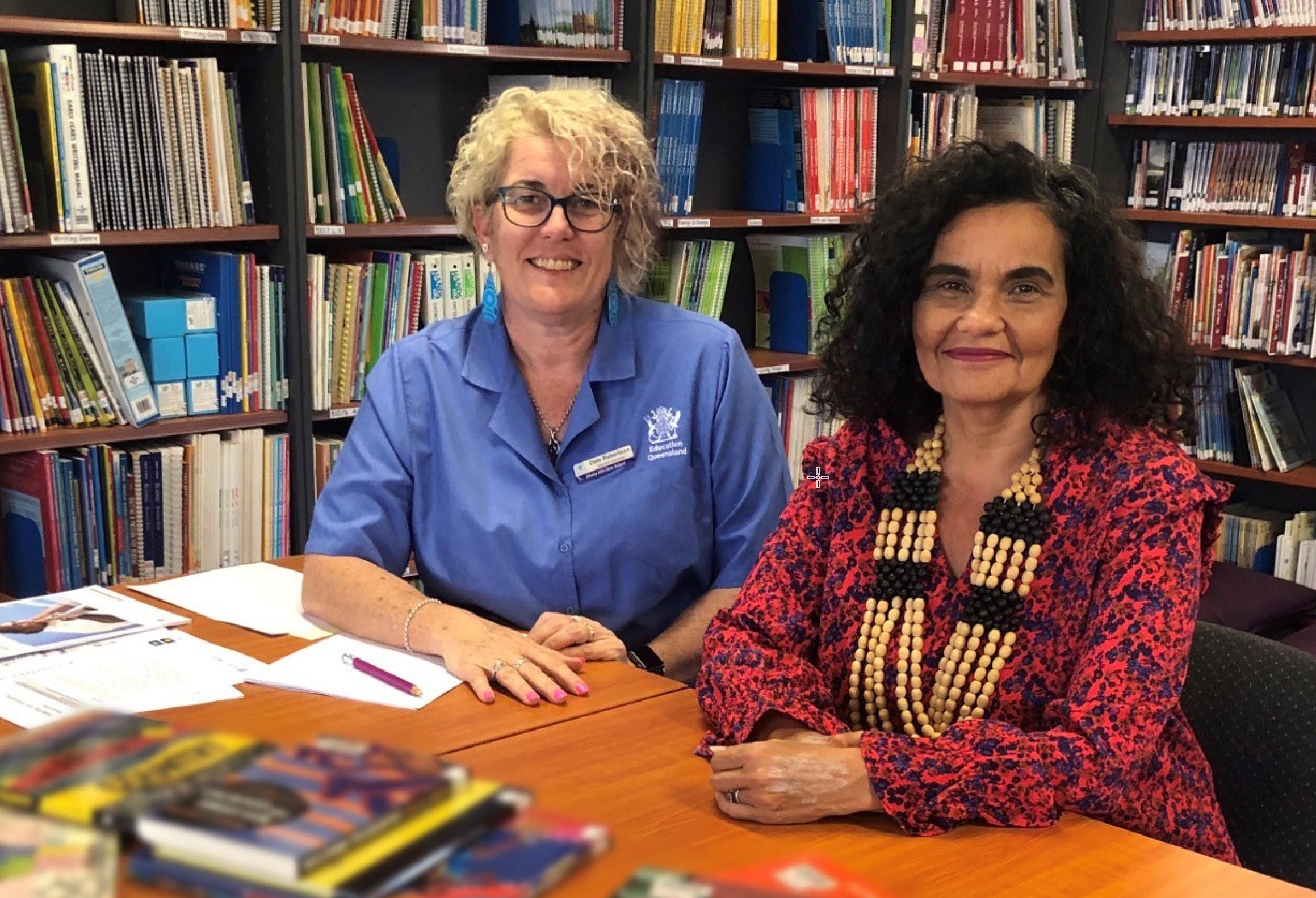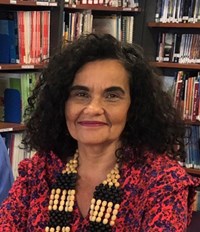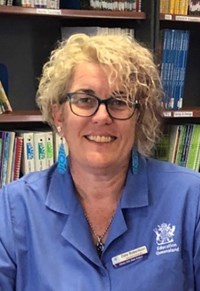Issue 117
Term 2 2021
How an old book created a commitment to better represent First Nations Australians
When a Year 3 student brought his library book home, it sparked a chain of events that helped build a relationship between a teacher librarian and an Aboriginal journalist, who together are committed to bringing change to every school across the country.

Dale Robertson and Kerry Klimm in the school library.
A mother’s anger: Kerry Klimm
When my 8-year-old showed me his library book, I knew immediately from the cover it wasn’t going to be positive. I flicked through the pages and was disturbed at what I saw. It took me back to my childhood – growing up in the ‘80s learning about ‘The Aborigines’, defined as nomadic people who wandered aimlessly until white people came and made us civilised.
Nothing I learnt in school reflected me, my family, our culture and history. My grandparents are both from the stolen generations and were removed from their families to a mission to live under oppressive conditions of ‘The Act’. They had to ask for permission for everything: to marry, to work, even to buy underwear. My nanna’s menstrual cycle was recorded by an anthropologist like he was studying animals.
I saw and lived the impact of racism and discrimination, of being dehumanised. I didn’t want my son experiencing what I did. This book made me angry and should not have been on a library shelf in 2019 to be seen by young minds.
A librarian’s shock: Dale Robertson
When the book was brought to my attention, I was embarrassed and worried what else might be in our library that I didn’t know about. Having come to an established library of over 30,000 resources I could have dug my head in the sand, claimed it wasn’t my fault, removed one book and kept with the status quo.
But I needed to take ownership, take action and make sure it didn’t happen again. As a non-Indigenous person, I don’t claim to know an extensive amount about Indigenous cultures. I was educated in a schooling system of the 1980s that had its own bias, and even though I have friends, relatives and colleagues who have been continuing my education, I still have a lot to learn.
We want our school library resources to provide accurate
and informative material to educate all of our students on Indigenous perspectives.
Working together: Kerry and Dale
We arranged to meet on a regular basis to go through the resources, remove books and identify gaps. We started with a Queensland Studies Authority (now QCAA) document called ‘Guidelines: Indigenous perspectives – selecting and evaluating resources’ (QSA Dec 2007): qcaa.qld.edu.au/downloads/approach2/indigenous_g008_0712.pdf.
It gave us a starting point with questions to ask, like: Does [the item] perpetuate the concept of terra nullius? Does it ignore or misrepresent Aboriginal resistance to European occupation of the land? Does the material over-generalise? Are stereotyping and racist connotations present?
While a good starting point, we found parts of the guidelines problematic. They suggested starting from books published up until 1980, but we removed books published as late as 2015.
‘Decolonising’ the library required empathy, cultural competence and tenacity. With 30,000 books in the catalogue, it requires ongoing commitment to change and learning.
As the weeks progressed, we got better at identifying what made a quality text or one that needed to be removed. During this process we also located excellent resources, and we regularly share those with staff.
We discovered 19 books in our catalogue that didn’t meet the criteria and made a spreadsheet with the CRN number and reasons for removing, with screenshots of each item.
Creating change
We presented this information to our school staff. We shared our journey and the database we had begun. Many teachers approached Dale, admitting they had been avoiding certain topics due to lack of knowledge and resources. They wanted to know more about relevant and accurate resources and how to make sure they embed Indigenous perspectives across all aspects of learning.
From this negative experience, we are developing a culture within our school that allows us to learn and grow as professionals and to help our students develop a broader understanding.
Not isolated
Other Aboriginal families and Indigenous and non-Indigenous educators from across the country have approached Kerry wanting the list to take to their schools. They expressed their concerns about what their libraries housed and how there was a lack of resources and support to help them decolonise their collections.
We both continue to have conversations with people outside our school about our project. There are many who share our concerns about this being a wider problem. There are many schools with large catalogues and very busy staff who don’t have the time or experience to evaluate all of their resources.
‘Decolonising’ the library required empathy, cultural competence and tenacity. With 30,000 books in the catalogue, it requires ongoing commitment to change and learning.
We strongly believe all schools need to take further action. We feel that there needs to be a shared location to store the database we have begun and continue to develop it. There should be a directive to all schools and libraries to evaluate their Indigenous resources on a regular basis.
We don’t want other families to go through what Kerry and her son went through and we want our school library resources to provide accurate and informative material to educate all of our students on Indigenous perspectives.
Image credits
Image supplied by Kerry Klimm and Dale Robertson

